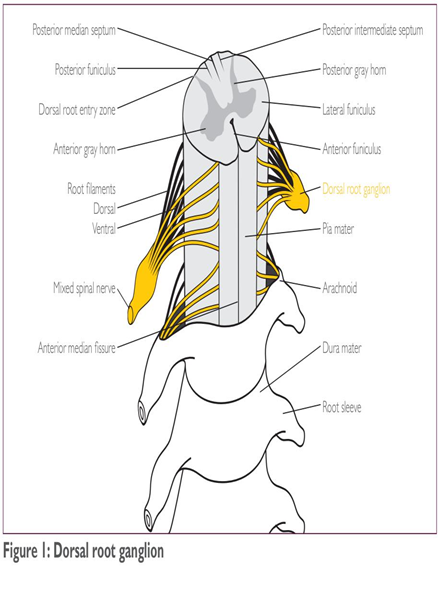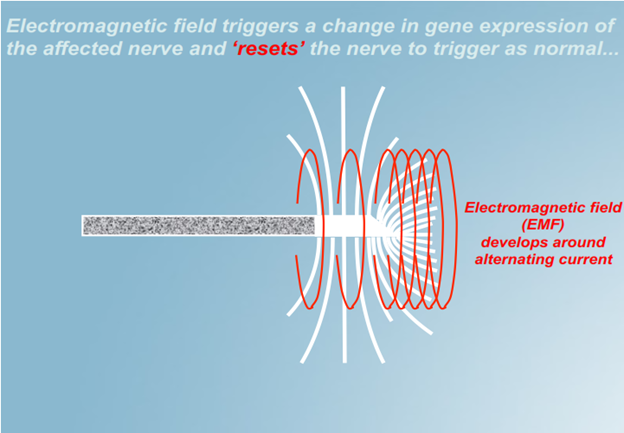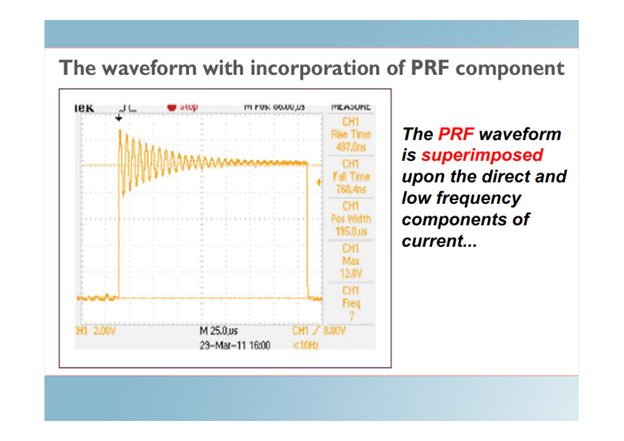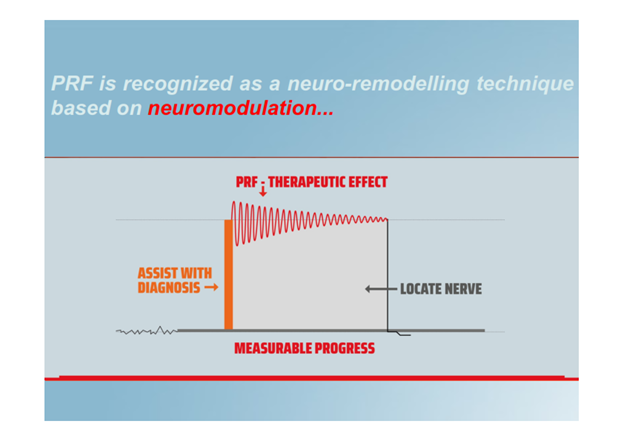PRF Therapy

Mechanism of Action
(1) At local (Target) Area: It has been suggested that PRF may have a neuromodulatory effect, that is the alteration of nerve activity obtained by stimulating a targeted site. It works by adjusting the way in which the nerve tissue functions, thus reducing pain by changing the pain signal transmissions along the pain-sensing pathway.
(2) At Spinal Cord: Recently it has been suggested that PRF on DRG may play a role in the modulation of Calcitonin gene-related peptide (CGRP) expression in the pain transduction pathway and by doing so it helps in Central sensitization problem of chronic pain. PRF on DRG induces expression of the early gene c-Fos, a marker for neuronal activity, in the dorsal horn and determines ATF3 upregulation. The latter activity appears to be selective in targeting small-diameter axons (C and A delta fibers) which relieves pain.
(3) At Brain: The analgesic action of PRF involves the enhancement of noradrenergic and serotonergic descending pain inhibitory pathways. These pathways improves the pain modulation system of body so the efficient pain control can be achieved even in Central sensitization problem of every chronic pain.

Invasive PRF


We use much advanced Non invasive PRF Neuromodulation device (USA-FDA approved and patented) in place of invasive PRF whenever possible. In fact it can be used even in some places where invasive PRF cannot be used.
The Non Invasive Pulsed Radio frequency device delivers a pulsed radio frequency current waveform that is superimposed upon the direct and low frequency components of the current. This provides all generally accepted advantages of a normal TENS device with added advantages of PRF to the patient in NON invasive manner.
The principal of the pain blocking mechanism of this device is that the pulsed radio frequency at 133 kHz power is capable of traveling along the deeper nerves and may reach the dorsal root ganglion (DRG) or nerve root. This then appears to produce a comparable effect to the interventional Invasive PRF without any injury or trauma to the tissues and possibly even a greater improvement in nerve conduction.
Advantages Of Non Invasive PRF Neuromodulation
Pain relief without restoring function is useless and it appears that this device is capable of achieving both pain relief with improved mobility
Applications
- 1. Nociceptive Pain
- 2. Neuropathic Pain
- 3. CRPS (Complex Regional Pain Syndrome)
- 4. Painful Neuropathies
Contraindications
Treatment should be avoided in following areas
- 1. On either side of temples
- 2. Over the carotid arteries
- 3. If patient has pacemaker
- 4. Do not use higher frequency therapies simultaneously as to avoid spiking of either current Pregnancy
FAQS
(1) Does the treatment hurt?
ANS: In non-invasive PRF we don’t use any needles so no pain related to needle pricks. It feels like massage kind of in treated area which is max at probe area. It is more relaxation experience and sometimes patients feel instant relief from the first minute of therapy. Intensity of therapy can be controlled at any point of therapy so no question of bearing pain while therapy.
In invasive PRF, we do it under local anesthesia and numbing cream/spray that provides pain relief during and after therapy.
(2) How many treatments will I need?
ANS: In Non-invasive PRF the number of treatments varies depending on the indication and tissue response. The effect of the treatment is cumulative, so you will typically need more than one treatment, though many patients get relief up to 80-90% in the first therapy. Most indications require 3-6 treatments which are once or twice a week. The frequency also varies if another treatment is combined with it.
In Invasive PRF a single session is enough.
(3) Are there any restrictions after treatment?
ANS: No there are no restrictions after treatment as such, but every painful condition has some do’s and don’ts and they should be followed to get maximum effect.

